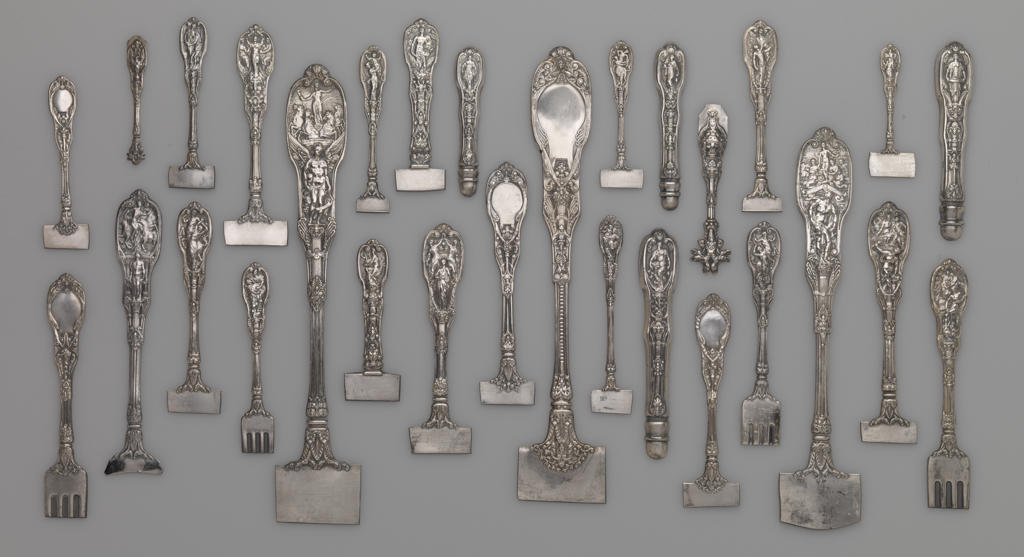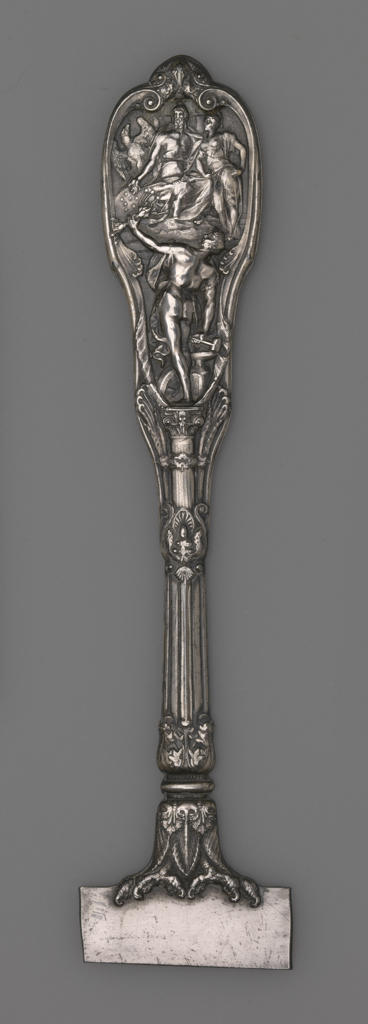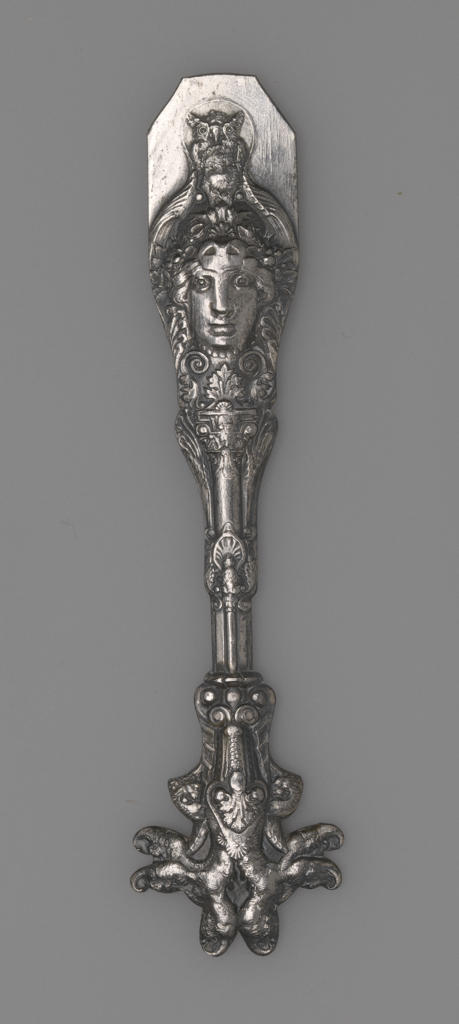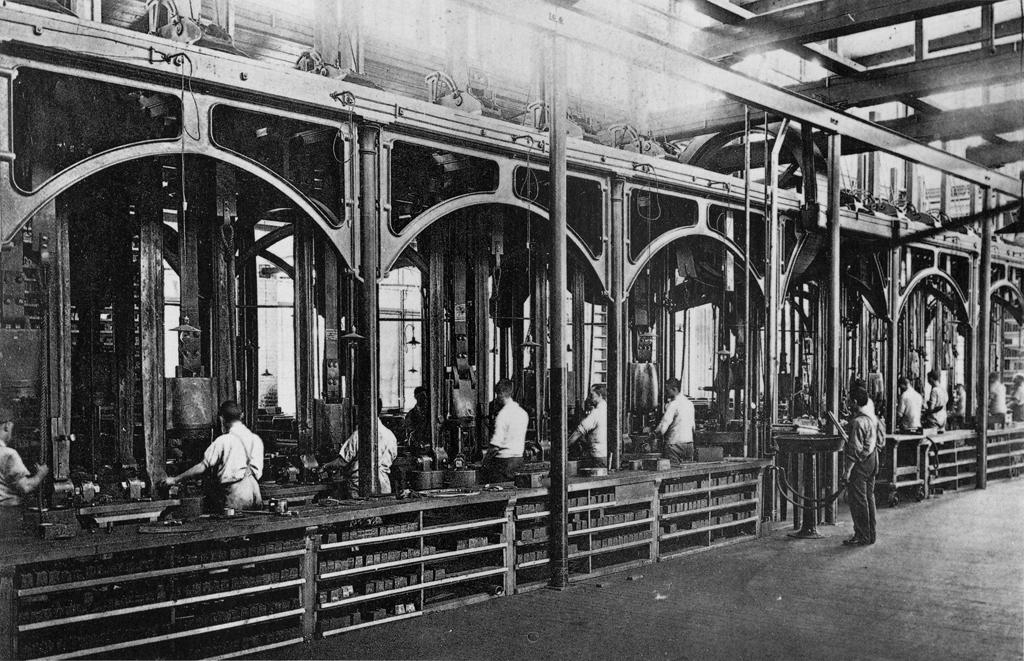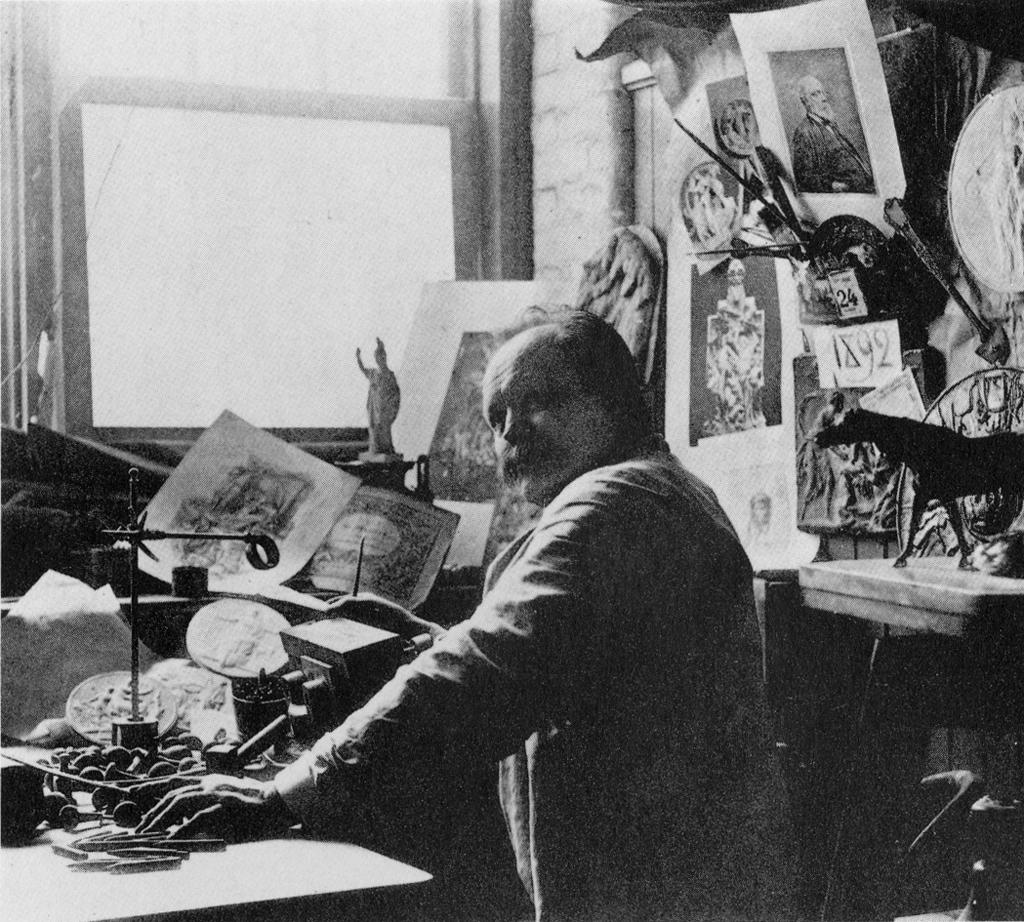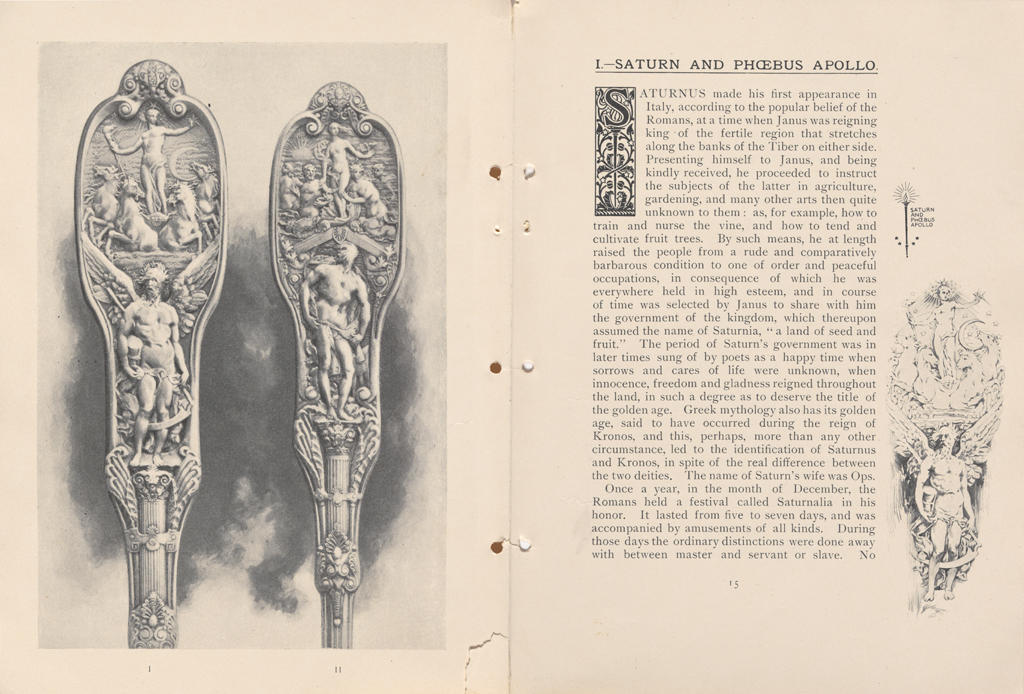Should a dining table be set with a full set of Gorham’s Mythologique flatware, guests would enjoy a visual feast of 72 pieces of gleaming sterling silver made as place settings and serving implements. Each example was decorated with one of 24 intricately wrought mythological figures and scenes, surrounded by classical ornamentation. However, the particular set shown in the image above poses a serious challenge to diners: the functional ends are missing or only partially formed. Missing also is the graceful curve that allows a comfortable grasp and balance in a diner’s hand.
This rare example of the Mythologique flatware service was purposefully left flat and unfinished because they are samples of the pattern, and most likely used to entice potential clients. The polished refinement of the handle designs starkly contrasts with the utensils’ unfinished lower sections—note the untrimmed excess metal left between the fork tines and the untrimmed metal on top of one half of the pair sugar tongs and the bottom of the serving piece.
These pieces combine elaborate detailing, the result of hours of modeling by hand, with evidence of a steam-powered drop press’s mechanized brute force. They testify to the desire 19th-century Americans felt for designs derived from the past as they simultaneously embraced the industrial processes that would guarantee the country’s future.
John Gorham’s three-month trip to Europe in 1852 was transformative for the Gorham Manufacturing Company, as Gorham purchased the first steam-powered drop press to be employed by an American silver company. The prescience of Gorham’s acquisition is evidenced in the company’s sales figures, which rose from $29,000 to $397,000 between 1850 and 1859, with the number of employees rising from 14 to more than 200. By the 1860s, the company was the largest producer of silverware in the world.
The Mythologique pattern was designed by Florentin Antoine Heller, a French silversmith trained under the influence of the École des Beaux-Arts in the studio of Jean-Léon Gérôme. Joining Gorham in 1881 after a brief stint at Tiffany & Co., Heller served as the company’s chief designer until his death in 1904, and led the company in adopting the academic style that harkened back to ancient Greek and Roman traditions. He was especially known for the precision with which he executed the steel dies that would be used for the drop presses. This talent was remarked upon with envy by several French critics and journals including La France, who lauded, “M. Heller is at once an inspired artist, having the gift of style, of grace and of elegance; and a workman possessing a skill without a rival—a hand for which no obstacle exists… . Notice how are modeled, posed, and—if I dare so to speak—harmonized … the mythological personages of these spoons, engraved in relief upon squares of steel. It is perfection.”
In 1895, Heller’s Mythologique was displayed at the Paris salon, where he was awarded a gold medal. In honor of the occasion, Gorham published a 60-page booklet celebrating the Mythologique pattern and Heller’s serious study of classical designs and their history. Following an introduction to mythology and the Mythologique pattern, each of the subjects depicted on the handles is illustrated and explained in a one to three-page description.
In the late 19th century and the first decade of the 20th century, production of America silver nearly quadrupled. Silver was purchased not only by the well-to-do; the availability of silver plate made pieces more affordable to a wide consumer base. Home was viewed as a haven from the rapidly developing industrialized world, and to dine properly with various implements made for specific functions was central to dining rituals that emphasized civility, manners, culture, and education. In the Victorian dining room, the ability to manage dozens of implements, from a pickle fork to an oyster ladle, attested to a diner’s command of complicated social rules and expectations, and therefore his or her status. Following the Mythologique booklet’s table of contents is a list of the 72 pieces offered in the pattern and the 24 designs they depict. For example, the design “Vulcan Presenting Thunderbolts to Jupiter” is found on the gravy ladle, large sugar sifter, cold meat fork, preserve spoon, table spoon, large cheese scoop, and the pea spoon; “Childhood of Marsyas” was used for only the pickle fork and the sardine fork.
The culmination of the success of Heller’s Mythologique pattern was its acquisition into the National Museum of Luxembourg. A letter dated May 3, 1895, from Léonce Bénédite, the museum’s curator, informed the Gorham Manufacturing Company of Providence, Rhode Island, that he had been instructed by the director of the Beaux-Arts to carry out the purchase, which the company publicized extensively.
Sources referenced:
Charles H. Carpenter, Gorham Silver 1831–1981 (New York: Dodd, Mead & Company, 1982); Charles Venable, Silver in America 1840–1940: A Century of Splendor (Dallas: The Dallas Museum of Art, distributed by Harry N. Abrams, Inc., 1994); and Mythologique: Artistic Spoon and Fork Patterns in a Series of Twenty-Four Designs of Mythological Subjects (Providence: The Gorham Manufacturing Company, 1985).
Elizabeth A. Williams
Curator of Decorative Arts and Design
